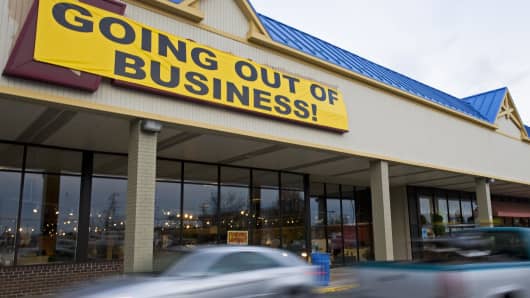A considerable amount of discussion has taken place since President Trump took an aggressive stance confronting Amazon as being "too huge."
But a more important question is how we as a society feel about the impact of the entire online tsunami on society overall.
The rapidly increasing trend to purchase items online has left in its wake decimated neighborhoods, shopping environments and shopping centers across America. Sure, there are many other factors affecting this trend besides on-line merchandising -- most notably real estate firms which have accelerated neighborhood declines by escalating rents -- but those factors combined have decimated downtown and suburban shopping areas and have had a major impact on our way of life. (Have you noticed the increasing proliferation of "FOR RENT" & "VACANT" signs?) This decline has brought a deterioration in places where people congregated, socialized, made friends and were greeted by a friendly face offering an intangible element of belonging to a community.
In 2000, Robert Putnam's best seller, "Bowling Alone," reflected on the gradual decline of social interaction which had previously defined and built our society. Initial homesteading communities pioneered our country. Together -- against forces of nature -- we gradually developed to become the leading economic nation as we spread across the country, while simultaneously retaining a sense of community.
We were a nation of joiners, sewing clubs, bridge, girl and boy scouts, church or other religious groups and bingo nights at the local community centers. All of these places offered an opportunity to get close to one another and bond with locals in your community. In the process, we developed friendships and a sense of togetherness. I can remember going to the local movie theatre on Saturday afternoon with my friends. I can remember belonging to a bowling league or attending a local dance where young people coupled up. These types of activities became part of our weekly or monthly routine.
In a world where our lives are now confined behind a screen and interaction with our neighbors seems to have become more irregular, we need to look at how companies like Amazon and other online services have impacted our communities.
As prescient as Putnam was, even he couldn't imagine America as a place where instead of going to the local hardware store or coffee shop on Main Street on Saturday morning, we're going into our Macbooks to online shop and watch Netflix. We now don't need to leave our homes to find our "significant other," shop, or go to our local movie theatre or even more importantly speak with friends on the phone. We can entertain ourselves behind screens; and, perhaps the thing most severely changing group dynamics is texting rather than picking up the phone and having a conversation or communicating, if you call it that, through Snapchat, Twitter, Instagram, Facebook, Pinterest – you name it.
What concerns me is not necessarily just whether Amazon is getting "too huge," but if these trends continue, whether technology will ultimately undermine togetherness and the social fabric of our society.
Are we willing to give up our community in exchange for lower prices and faster delivery times? What are the changes in our pattern of purchasing and entertainment doing to our social interactions? Sure, we want lower costs, more convenience, and access to new technologies. However, in the process, do we want to destroy all potential sources of human interaction?
The sudden attack on Amazon is but a reflection of the foundational loss of human communications.
So where does that leave us? Do we just accept the idea that physical retailing is dead and that we are destined to have local communities filling empty spaces with restaurants, WeWorks and massage parlors. Or do we try to save our neighborhood stores and the original uniqueness of places like Macy's, Borders, Toys R Us, and our local grocery, drug and hardware stores.
What they offered us was the opportunity to explore our five senses: taste, feel, smell, sight and sound.
Perhaps that points a way to recovery. As price-conscious shoppers have moved online, physical retailing has to become more of an experiential activity. (A great example of that is the recent creation of The Museum of Ice Cream).
Couple these experiences with increased depth and variety of offerings and faster delivery for items that aren't in the store which may require efforts of many smaller entities thereby imparting the benefits of cooperative association.
Above all else, encourage a program of patronizing your local bookstore, supermarket, shoe store, you name it, in the interest of maintaining the life of your community, even at some expense. Germany has done it successfully, why not neighborhood USA?
Alan Patricof is the co-founder and managing director of Greycroft. He also founded Apax Partners, one of the largest private equity firms globally.
For more insight from CNBC contributors, follow @CNBCopinion on Twitter.




